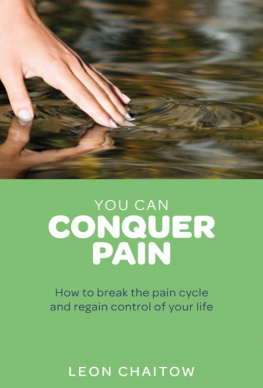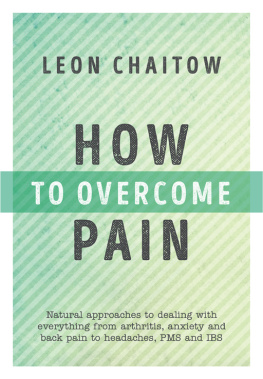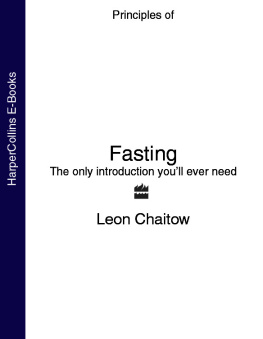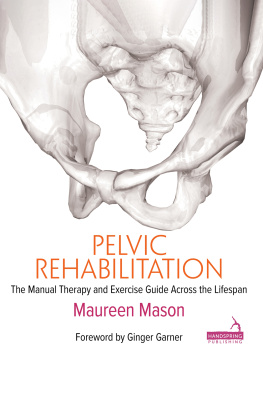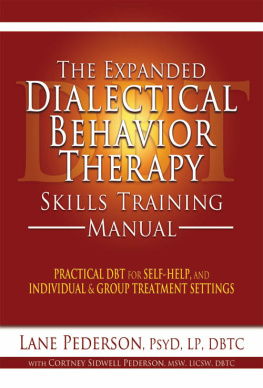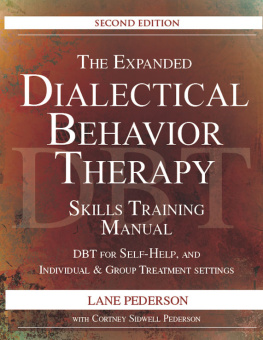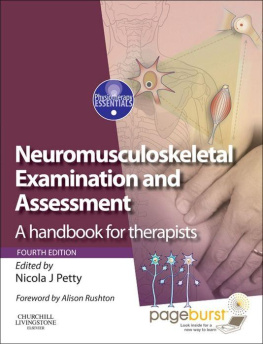Fourth edition L EON CHAITOW Palpation and Assessment in Manual Therapy Learning the art and refining your skills Foreword Jerrilyn Cambron, LMT, DC, MPH, PhD Chair, School of Allied Health Sciences and Distance Education; Chair of the Massage Therapy Program; Professor, Department of Research, National University of Health Sciences (NUHS), USA; President, Massage Therapy Foundation, USA Contributors Sasha Chaitow Whitney Lowe Warrick McNeill Sarah Mottram Thomas W. Myers Michael Seffinger 
HANDSPRING PUBLISHING LIMITED The Old Manse, Fountainhall, Pencaitland, East Lothian EH34 5EY, Scotland Tel: +44 1875 341 859 Website: www.handspringpublishing.com First published 2017 in the United Kingdom by Handspring Publishing Copyright Handspring Publishing Limited 2017 All rights reserved. No parts of this publication may be reproduced or transmitted in any form or by any means, electronic or mechanical, including photocopying, recording, or any information storage and retrieval system, without either the prior written permission of the publisher or a licence permitting restricted copying in the United Kingdom issued by the Copyright Licensing Agency Ltd, Saffron House, 610 Kirby Street, London EC1N 8TS. The right of Leon Chaitow, Sasha Chaitow, Whitney Lowe, Warrick Mcneill, Sarah Mottram, Thomas W. Myers and Michael Seffinger to be identified as the Authors of this text has been asserted in accordance with the Copyright, Designs and Patents Acts 1988. First edition 1997, Churchill Livingstone Second edition 2003, Churchill Livingstone Third edition 2010, Churchill Livingstone ISBN 978-1-909141-34-6 British Library Cataloguing in Publication Data A catalogue record for this book is available from the British Library Library of Congress Cataloguing in Publication Data A catalog record for this book is available from the Library of Congress Notice Neither the Publisher nor the Authors assume any responsibility for any loss or injury and/or damage to persons or property arising out of or relating to any use of the material contained in this book. It is the responsibility of the treating practitioner, relying on independent expertise and knowledge of the patient, to determine the best treatment and method of application for the patient. Commissioning Editor Mary Law Copy-editor Stephanie Pickering Designer Bruce Hogarth Indexer Aptara Typesetter DiTech Process Solutions Printer Bell and Bain The Publishers policy is to use paper manufactured from sustainable forests |
CONTENTS
| Leon Chaitow | | Michael Seffinger | | Leon Chaitow | | Leon Chaitow | | Leon Chaitow | | Leon Chaitow | | Leon Chaitow | | Leon Chaitow | | Leon Chaitow | | Leon Chaitow | | Leon Chaitow | | Thomas W. Myers | | Leon Chaitow | | Leon Chaitow | | Leon Chaitow | | Leon Chaitow | | Leon Chaitow | | Whitney Lowe | | Warrick McNeill and Sarah Mottram | | Leon Chaitow | | Leon Chaitow | | Leon Chaitow | | Leon Chaitow | | Sasha Chaitow | | Sasha Chaitow | | Leon Chaitow | | Leon Chaitow | | Leon Chaitow |
Sasha Chaitow PhD Independent Researcher Corfu, Greece Whitney Lowe LMT Director, Academy of Clinical Massage Sisters, OR, USA Warrick McNeill Grad Dip Phyty (NZ), MCSP Director, Physioworks Associate Editor, Journal of Bodywork and Movement Therapies London, UK Sarah Mottram MSc MCSP Director, Movement Performance Solutions Bristol, UK Thomas W. Myers LMT NCTMB CSI Director, Anatomy Trains Walpole, ME, USA Michael A. Seffinger, DO Professor Department of Neuromusculoskeletal Medicine/Osteopathic Manipulative Medicine (NMM/OMM) College of Osteopathic Medicine of the Pacific Western University of Health Sciences Pomona, CA, USA
The university at which I teach encourages students to frequently practice their palpation and assessment skills on fellow students and instructors. Some students have a natural ability to feel the structures they are palpating, while others are going through the motion of poking and prodding without understanding what their fingers should be experiencing. I am willing to let students practice these exercises on me because I was once at their level of inexperience. We all must start at the beginning of the path. One of the exercises I was taught as a student in palpation class was to move my fingers over a sheet of paper until I could locate a single human hair hidden underneath the page by a fellow student. Over time, we would increase the number of pages to challenge each other and to continue improving our skills. We initially struggled to find the hair under one sheet of paper, but with practice we improved our sense of touch and could feel the minor shift in paper height even through many pages. As such, palpation and assessment skills improve over time. As we learn to trust our abilities and instincts, we stop being concerned about our body mechanics during the assessment and start focusing on what we are feeling under our fingertips including the incredible variations in tissue height, density, temperature, and movement. We are continually learning the nuances of touch throughout our journey as manual medicine practitioners, fluidly moving between assessment and treatment of human structures and finding new variations with each patient we see. Leon Chaitow has been my mentor and friend for many years. I have always been impressed by his ease at describing even the most complex issues in understandable terms. After dozens of publications on manual therapy, he has brought forward a revision of another incredible text. Palpation and Assessment in Manual Therapy brings our attention towards the most important aspect of everyday practice in manual medicine-the art, science, and intuition of palpation and assessment. This text poses many interesting questions about how and what we feel, bringing us back to the beginning of our education to rethink our own method of palpation. After many years in manual medicine, palpation and assessment become second nature but include our own biases and expectations. Refocusing on the process and relearning different aspects of thought discussed in this text was educational, interesting, and exciting. Leon Chaitow has many suggestions on how to focus on different aspects of palpation such as the external feel and temperature of the skin and moving from the superficial layers to the subcutaneous fat, fascia, vessels, and eventually muscle tissues and joint complexes, as well as the potential reasons for variability in the feel of these structures. Multiple exercises are included throughout the book that encourage refinement of the described techniques, which range from basic (such as the hair through paper exercise - see page 43) to advanced, making this text ideal for improving the skills of seasoned practitioners and students alike. Illustrated orthopedic tests, postural observation methods, and functional movement tests are all revisited, accompanied by commentary and discussion regarding variations that we may encounter in clinical practice. | Next page

